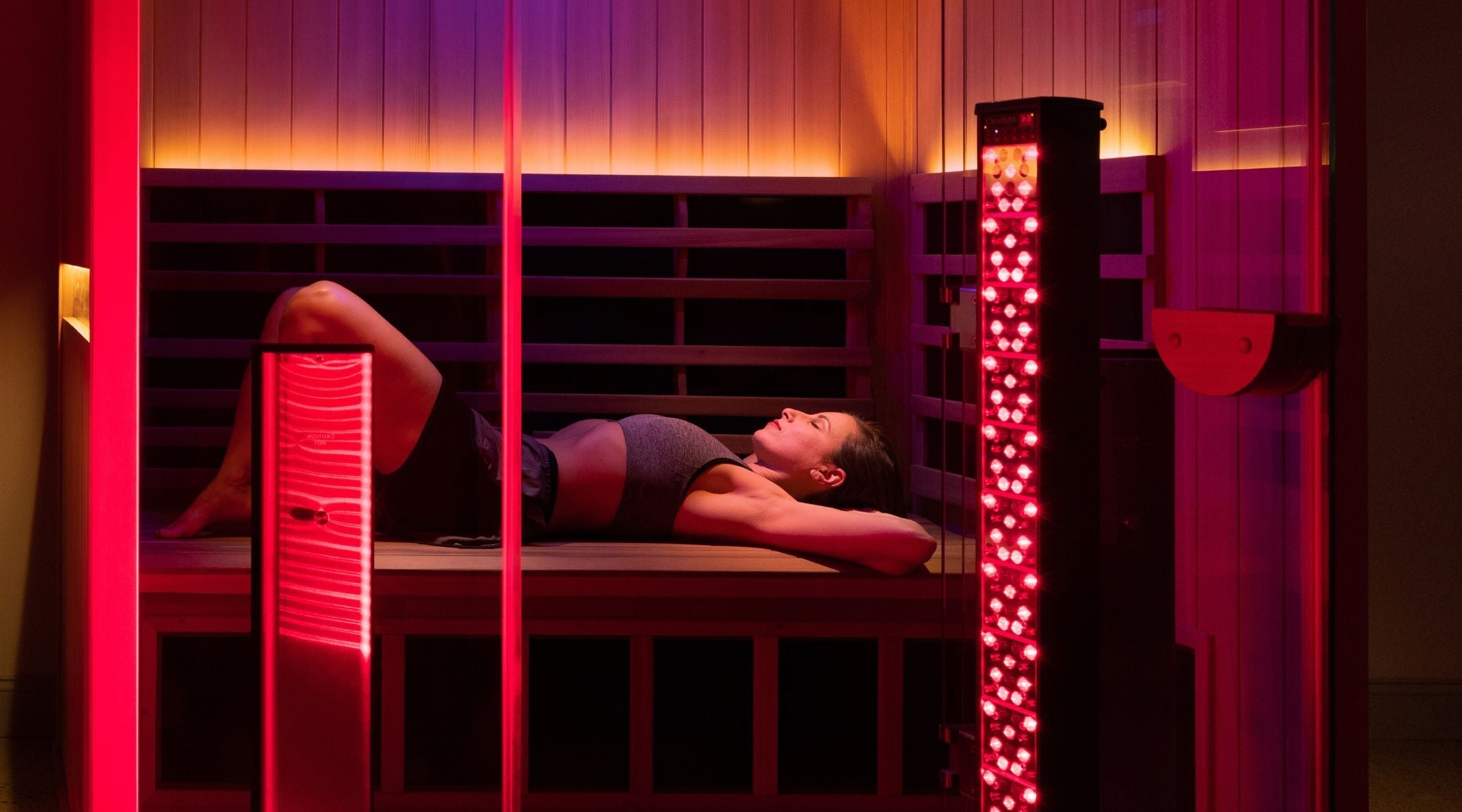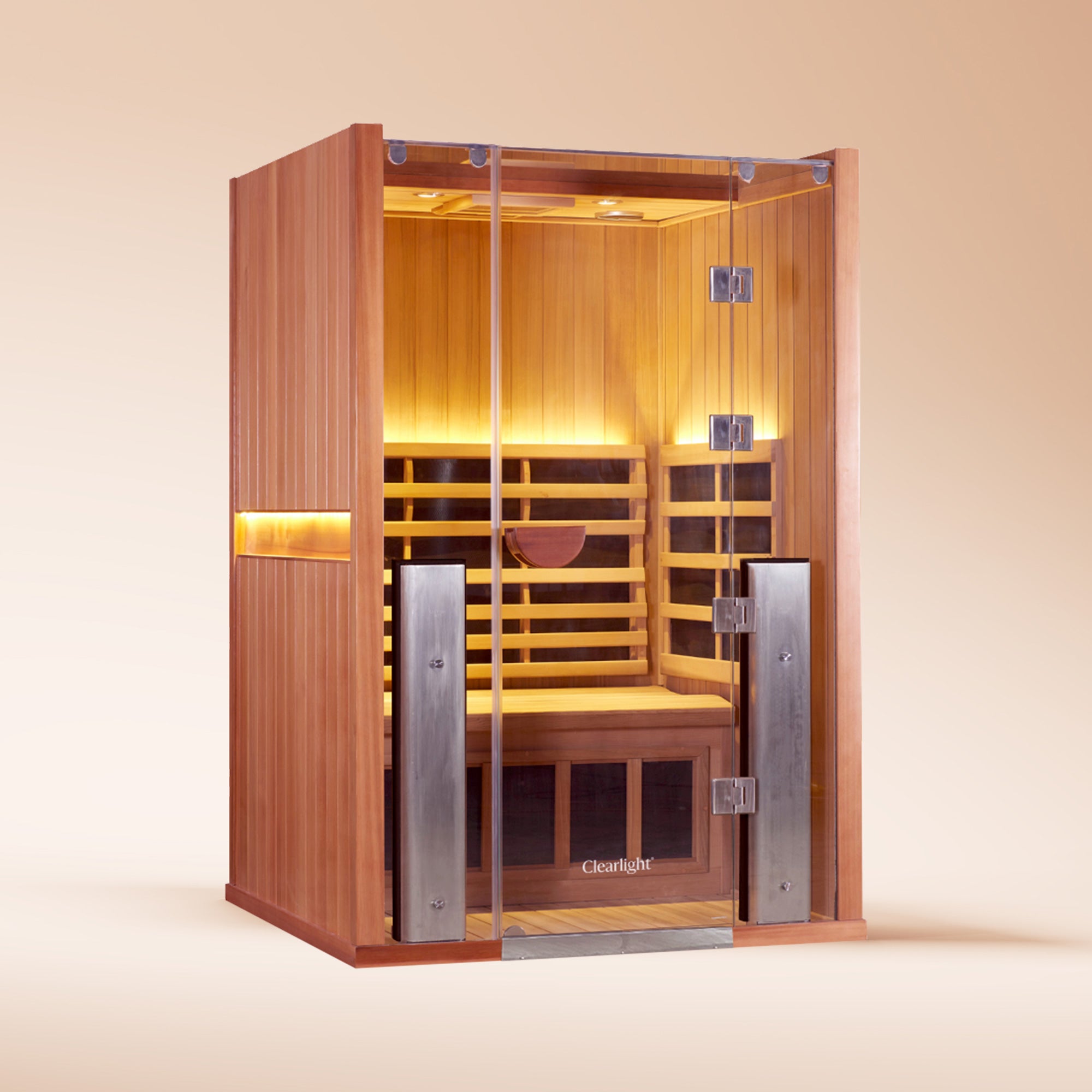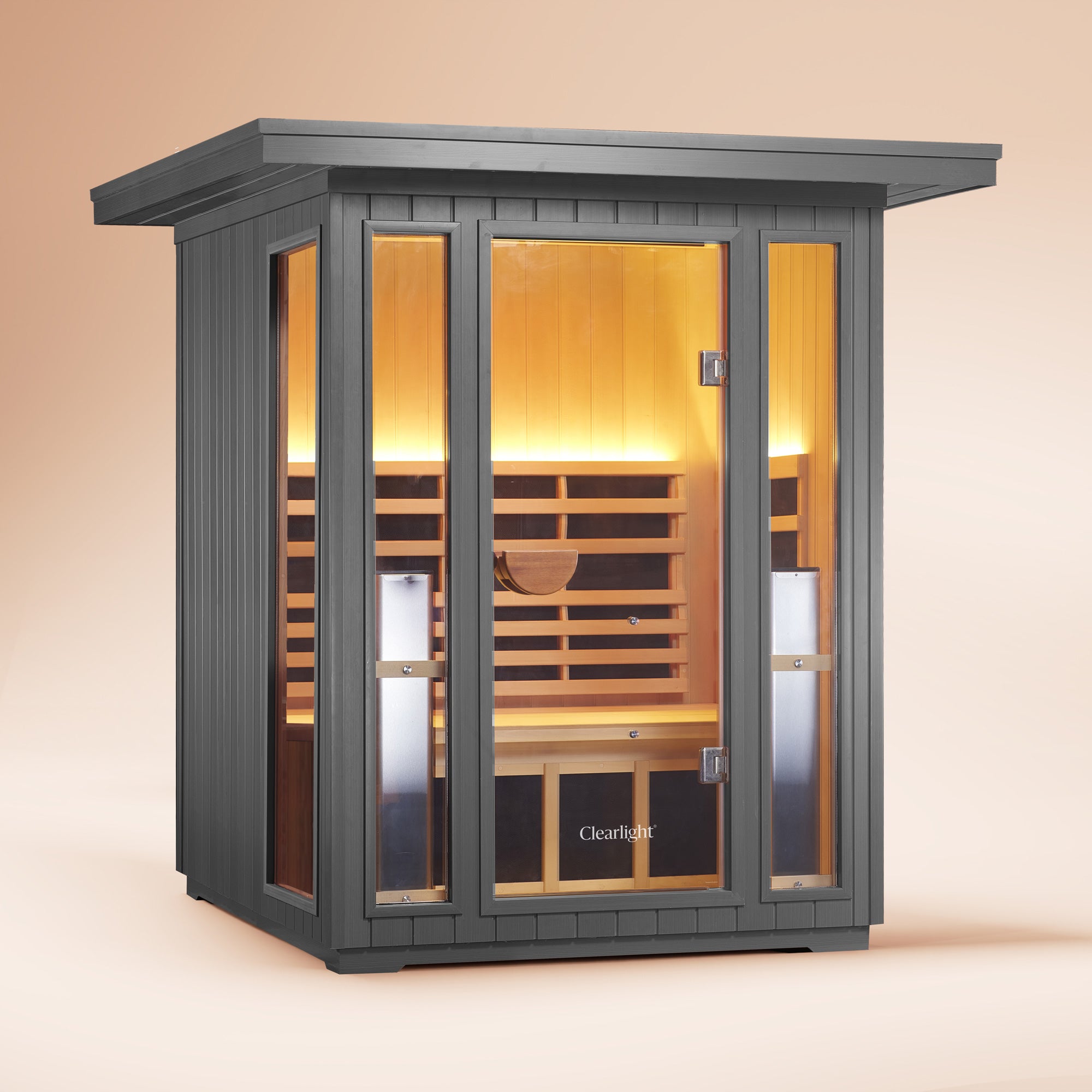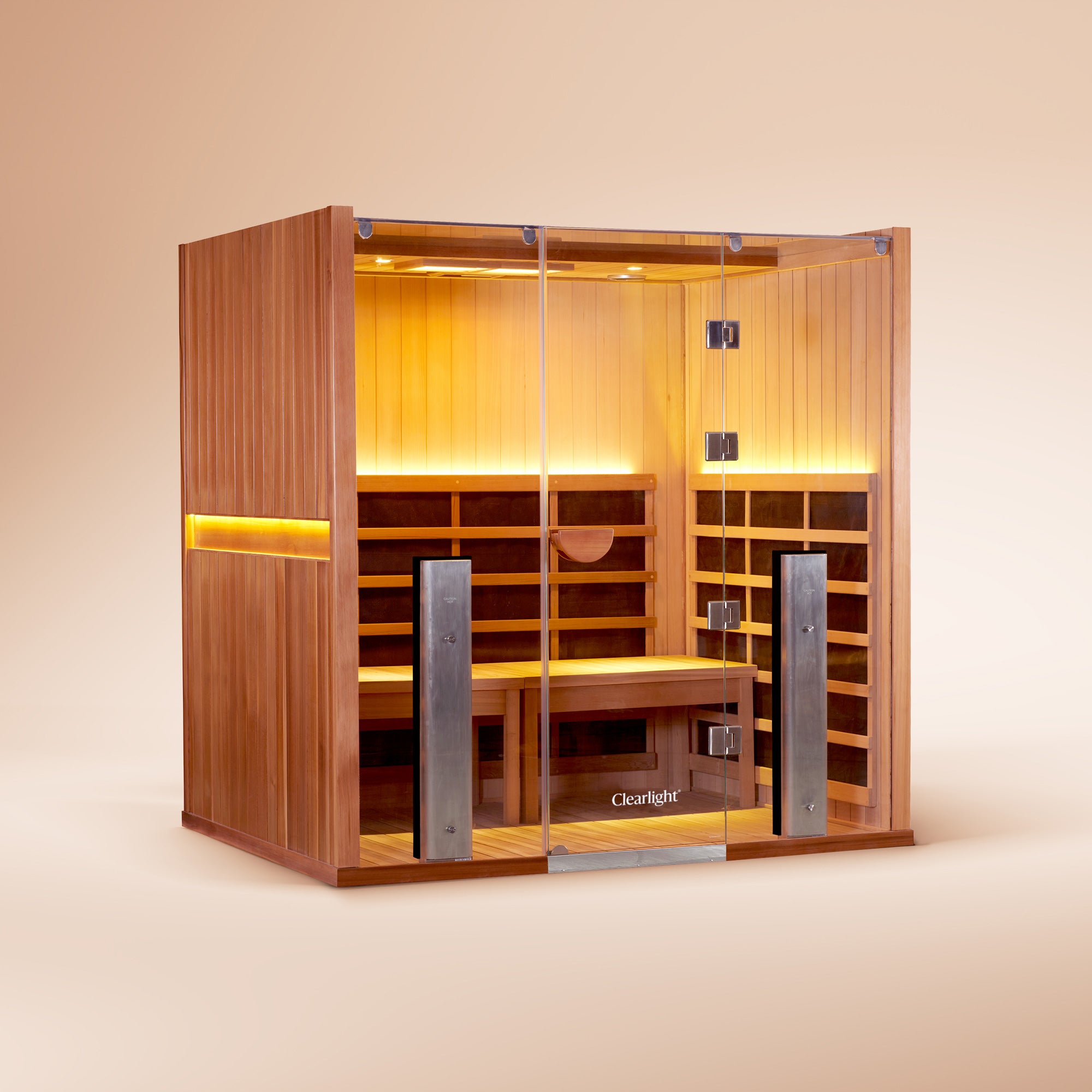In this blog post I will talk about infrared sauna wood choices. These choices include cedar, hemlock, basswood, and other frequently used types. I’ll also consider the benefits and downsides of each wood type and tell you why building materials are used the way they are.
But first up, let’s start with a definition:
Definition: Differences Between Wood Vs. Timber Vs. Lumber
But let’s start with a definition:
In British English, there’s a difference between the words “timber”, “lumber”, and “wood”. The Cambridge dictionary - a quintessential British development - defines the words as such:
- Wood: “a hard substance that forms the branches and trunks of trees and can be used as a building material, for making things, or as a fuel” (1).
- Timber: “trees that are grown so that the wood from them can be used for building” (2).
- Lumber: “to move slowly and awkwardly” - this word has an entirely different meaning for our American neighbours across the ocean (3).
So, in Britain, wood that’s intentionally grown for building purposes (like saunas) is called timber. In the US, that same wood is called “lumber”. I will use the former term in this blog post. And, now that this definitional issue has gotten out of the way, let’s explore the different wood types in the next section:
Sauna Wood Type: Why The Topic Matters A Lot
I get it. You’re reading people saying online that “cedar wood is the best sauna wood type” or that “there’s no need to overpay for sauna wood, just use inexpensive materials”. Both statements are oversimplifying and misleading, unfortunately.
So, in the next section, I’m giving you a crash course about the sauna wood type market. First, I’ll have to explain to you why sauna wood types matter. So, in a way, I’m creating a sauna wood type customer guide first. That way, you can later understand why some wood choices are better than others, depending on your unique situation.
So let’s explore different factors that help you determine why you would want one wood type rather than another:
- Well-insulated. You’ll want a wood type that keeps the hot air trapped inside the sauna, and doesn’t allow for cold air to enter the sauna. For this reason, ticker woods generally work best. If you’d create a sauna of very thin woods, such as with cheap plywood, the sauna would lose lots of heat to the outside environment.
- Structural integrity. Some timber is better suited to construct saunas from than others. If you’ve got a knotted wood like pine, the durability of your sauna might be lower in the long run because of that knotting. Cedar wood - which is one of our choices at Clearlight Infrared Saunas - has amazing durability and strength. For that reason we can offer a lifetime warranty for residential saunas, which is almost unparalleled in the industry.
- Hypoallergenic. Some people have difficulty spending time near Hemlock or pine, for different reasons (4; 5; 6; 7). Such allergies are hard to determine upfront. What is known is that some wood types have a lower propensity to cause allergic reactions than others. Eucalyptus is one example of a wood type that’s more likely to cause an allergic reaction in a higher percentage of individuals. Of course, if you’re not allergic, there’s no problem. Finding out whether you’re allergic in the first place requires functional medicine testing, and for that reason, most people will opt for choosing hypoallergenic woods in the first place.
- Toxicity. Some woods are simply more prone to be toxic in general. For instance, a wood might contain resins. These resins are heated and emitted into the atmosphere when you’re sitting inside the sauna. Many people buy an infrared sauna because they want to improve their detoxification in the first place. Hence, adding to your toxic load will negate some of the health benefits from spending time inside a sauna.
- Beautiful aesthetic. If you’re spending several thousand GBP on a sauna and you want the best, you might as well choose an option that’s aesthetically pleasing. Just imagine the difference between a sauna that’s made from inexpensive plywood and one made from Canadian red cedar. The difference is night and day. And, of course, if you exclusively buy a sauna for health benefits, less expensive woods are a great option. However, if you want the best sauna that impresses your friends and family and looks amazing in your bathroom, aesthetically pleasing and more expensive woods will enter the equation.
- Retains beauty over time. Sure, it’s amazing your sauna looks good when you buy it. But what about five or fifteen years down the road? Some wood types are simply easier to damage, such as by scratching or other means. For that reason, you’ll want a wood type that retains its beauty over time because it doesn’t damage easily. The hardness of a wood can be measured with the “Janka Hardness Scale”. That hardness determines how easily a wood scratches or dents.
- Heat and water resistance. Some woods simply do much better under higher temperatures or higher humidity than others. And, if your sauna doesn’t deal with higher temperatures well - because it changes shape under heating - then the wood type isn’t great. This characteristic of heating eliminates many wood types from being great sauna options. Also, water resistance, which is more of an issue with traditional saunas, affects timber choice as well.
- Cost. Of course, the cost of a wood type is probably the most important factor for many people. If you cannot afford the more expensive Canadian cedar or popular, you’ll end up with other options on the market. The problem here is that some of the best sauna wood choices, such as cedar and popular, are also the most expensive. So there’s often a tradeoff between toxic exposure, durability, aesthetics, and other factors on the one hand, and costs on the other hand.
- Design. Sure, you might choose a very nice timber type, but, if the timber isn’t used properly for optimal design then the end result isn’t great. Some saunas simply look much better than others, and often, by paying a little bit more you’re getting a wonderful design. That well-designed infrared sauna then looks wonderfully in your bathroom or garden, and will solicit the compliments of friends and family.
- The type of sauna you use. As I’ve written in the past, there’s a huge difference in the temperatures that are used in a traditional sauna like a Finnish sauna and an infrared sauna. Traditional saunas use temperatures of up to 110 degrees Celsius, while that’s only 60 degrees at the maximum for infrared saunas. Also, traditional saunas use higher levels of humidity, therefore placing different demands upon the wood.
- The part of the sauna. If you want to go really extreme, you could design different parts of the sauna from different timber. For instance, you could make the cladding of the sauna from the very strong and structurally sound popular while designing the backrests from softer materials such as cedar.
So, hopefully I’ve convinced you now that the sauna wood type matters a lot, not only in the short term but especially in the long term as well. Many woods are simply not great choices for making saunas, because they don’t retain their aesthetic appeal or cannot deal with temperature fluctuations over time. For that reason, I’ll explore different wood types in the next section and tell you why they might be a good or not so good choice:











Infrared Sauna Calories Burned Per Hour
Infrared Sauna Vs Infrared Sauna Blanket Benefits: What's Better?